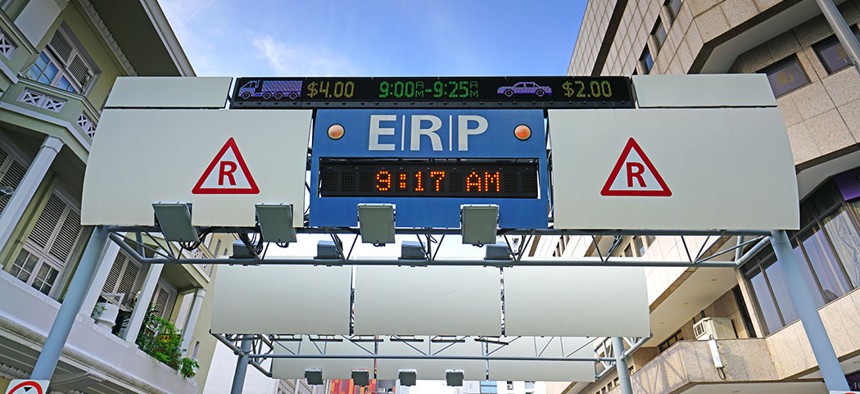New York City may be the first to implement congestion pricing in the U.S., but other international cities beat it to the punch – one by decades.
Here are the innovative ways they’ve implemented their plans.
Singapore
Started: 1975
Charge: Variable pricing based on time of day and location, plus $150 for the in-vehicle transponder
Annual net revenue: $100 million
Tech: Singapore’s congestion pricing program at first relied on paper licenses and manual enforcement at entry points to the congestion zone. In 1998, however, the city-state switched to Electronic Road Pricing, relying on transponders in each vehicle and overhead gantries. Today, Singapore is undergoing yet another transformation as it switches to in-car units that communicate with a satellite system to implement distance-based tolling.
London
Started: 2003
Charge: Daily flat fee of roughly $14
Annual net revenue: $182.1 million
Tech: London uses cameras around its congestion zone, relying mostly on automatic license plate recognition to record vehicles entering and exiting the tolled area. The cameras are largely installed on roadside poles and posts.
Stockholm
Started: 2007
Charge: Variable pricing based on time of day, with a rush-hour fee of roughly $4 and daily fees capped at roughly $11
Annual net revenue: $155 million
Tech: Stockholm’s congestion pricing scheme applies to most of the Stockholm city center and relies on automatic license plate recognition. A vehicle’s plates are photographed by cameras installed on overhead gantries at the congestion zone’s various entry points.


